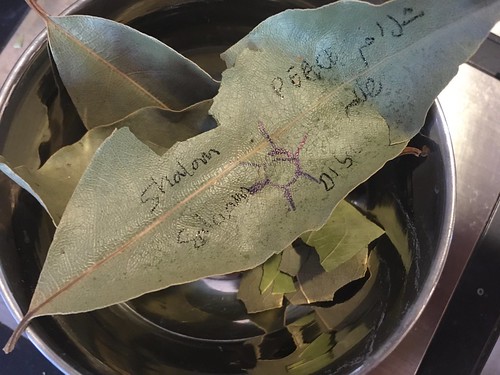Another tropical plant, this time from the Caribbean is what's used for making Bay Rum eau de cologne or aftershave lotion (more on that later). It has many uses, both culinary and cosmetic as you can see in this video. Similarly to the bay laurel leaves, these also can be used in cooking. P. racemosa is often mistakenly labelled as Bayberry or Bay Rum when sold as an essential oil, and like allspice, it also belongs to the Myrteaceae (myrtle) family. As far as the scent goes it is very similar to bay leaf, with the charming green leaf and spicy elements all strewn in together.
Bay Rum
Although related to all of the above, is not a particular plant, but a rum-based cosmetic, which is the Caribbean answer to the European Aqua Mirabillis of yore. Bay Rum is a fragrant, alcohol-based preparation that was first made by sailors in the 16th and 17th Centuries as a way to improve their overall hygiene (which sounds a bit hard to believe for a population that was predominantly male, even if in confined quarters of ships). From what I could gather, shaving didn't become widely spread in this culture till the 19th Century. So let's perhaps they used it instead of bathing and for its disinfectant properties.
The history of Bay Rum is a bit hazy, but it is clear that it originates among sweaty, stinky sailors in the Caribbean, using readily available spirits and spices to counter balance the stench that the tropical climate triggered in their closed quarters.
The most primitive Bay Rum preparations Pimenta racemosa leaves were steeped in rum and this simple tincture was applied for multiple uses by the above mentioned sailors: as a deodorant, disinfectant and perhaps also as an aftershave (though I have little information about the grooming habits of sailors and whether or not they actually bothered shaving while at sea). In the 19th Century, it has become a fully-fledged commercial product manufactured primarily in the Virgin Islands. Other ingredients added to it were citrus oil (especially that of lime), pimento berry (from Pimenta diciosa), and cinnamon. Another bit of history is found in the book "Perfumes of Yesterday" by David G. Williams, pages 142-143. Here we learn that the Bay Rum preparation was actually a hair-growth product, with the stimulating property of the bay leaf from P. racemosa of increasing blood flow (and therefore nutrients, via the blood stream) to the area it is applied (in this case scalp). From this ensued a variety of "Hair Tonics" and the barbershop connection becomes even clearer than the aftershave usage. A historical formula is provided, using surgical spirit, because in wartime (I'm assuming WWI or WWII), because other types of alcohol were either unavailable or prohibited (for example: industrial methylated alcohol). The surgical alcohol was a solution of castor oil and methyl salicylate and ethyl phthalate, diluted in industrial spirit. For this reason, talcum powder was added to the formulate, as it absorbed the fatty oil from the preparation, and result in a clear liquid. Although the talc will also absorb some of the components of the essential oils (particularly that of the lemon), it was mostly the terpenes, which was considered advantageous in the formula. Another curious addition was a solution of burt sugar as a colouring agent, giving the finished product a dark rum-like colour. The formula provided in that book contains oil of bay, clove, lemon, menthol, tincture of capsicum (what gives chilli peppers their hotness!), acetic acid (the active ingredient in vendors), surgical spirit, water and talc. So we see this is a functional fragrance, with ingredient that are acting as a stimulants for the skin.
Dozens of
Bay Rum formulations ensued throughout the years, and it is in fact a concoction that can be very easily prepared at home using minimal equipment and readily available raw materials. Although not labeled as Bay Rum, the popular and iconic scent
Old Spice is very much based on this historic preparation.
Many recipes for Bay Rum call for infusing the whole spices in rum and then adding other alcohols (such as vodka or grain alcohol), as well as other ingredients that may be beneficial to the skin, such as witch hazel and glycerin. This method is fine as long as no essential oils are added to the recipe. Often times the bay leaf (or leaves) would be kept as decoration within the finished product, which will also continue to release scent well after the bottling stage.
Keep in mind, that if your alcohol base is only one of those beverages, their alcohol content is not high enough to dissolve essential oils, and they will be floating on the surface of the product instead, and burn the skin. I wouldn't put such a product on my wrists, let alone a face that has just been clean-shaven! So before choosing a recipe, use your common sense please... While most recipes online (which linked above) were very specific about using P. racemosa, it is a bit hazy from the recipes that I have found in literature which bay leaf is actually used. Having no access to this particular bay, I am unable to prepare an authentic formula for you to try. But I am curious to improvised with local ingredients I have on hand. And once I am satisfied with a result I promise I will post here an original recipe of my own.







